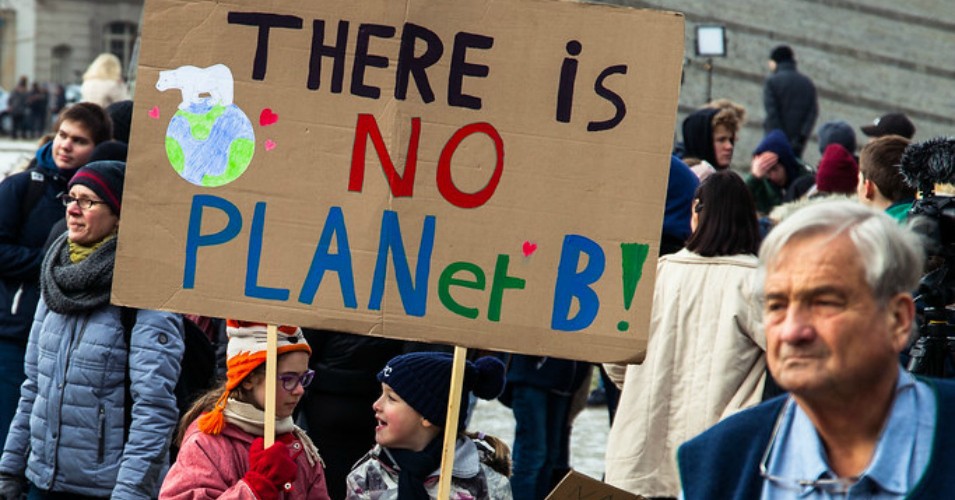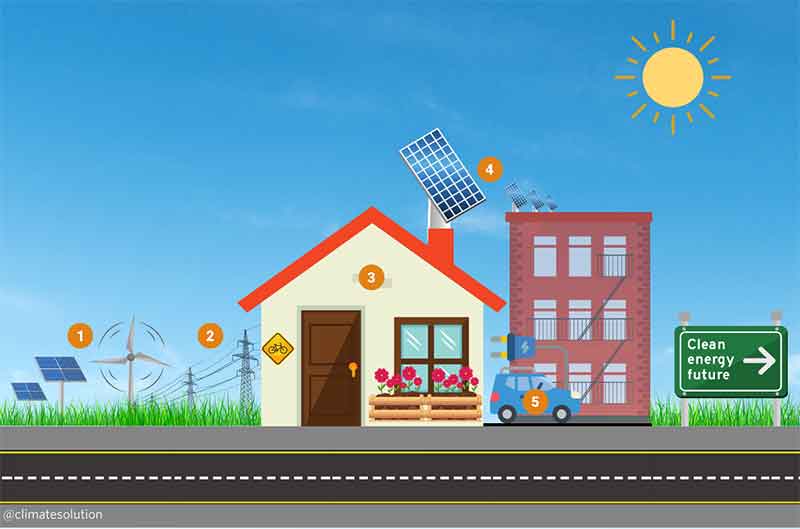
All the signs are that this summer will break all existing records for heatwaves. It is only the middle of June, and yet large parts of the world are already registering temperatures that in the past were not reached until the height of the season.
The US weather map for June 16 shows almost the whole South and Southwest and much of the Midwest over 90° F (32° C).
The European heatwave, confined so far to Spain, Portugal and southern France but forecast to spread to the rest of Europe, has raised temperatures to 104–109° F (40–43° C). This corresponds to the highest temperatures reached during the European summer heatwaves of 2003 and 2013. This time around, however, temperatures in this range are just the beginning.
Even worse is the heatwave in South Asia, extending from the Gulf (Arabian or Persian, as you prefer) through southern Iran and southern Pakistan and across northern India. In this belt highs of 109–115° F (43–46° C) have been observed; on May 14 a reading of 124° F (51° C) earned Jacobabad, a city of 200,000 people in Pakistan’s Sindh Province, the title of ‘the hottest city on Earth.’
Where is the limit?
The human body is adaptable only within certain limits. At what point do rising air temperatures become incompatible with human survival?
This is a little complicated. Survivability depends not on air temperature alone but on air temperature in combination with humidity. Dry air enables the body to cool itself by sweating; with rising humidity this grows more difficult and finally impossible.
Measures have been devised to take this interaction into account. Most commonly used is the Wet Bulb Temperature (WBT) – the temperature shown by a thermometer whose bulb is wrapped in cloth that has been soaked in water at the same temperature as the air. Evaporation from the cloth cools the bulb, just as perspiration cools the human body.
Human beings cannot survive once the WBT reaches 35° C (95° F). This is the threshold at which a healthy person at rest will die in six hours. WBTs at this level or above have not as yet been recorded in populated areas. Apparently conditions came closest to the threshold of survival during a 2015 heatwave in Bandar Mahshahr in southwestern Iran.
Of course, not everyone can afford to rest indoors or in the shade whenever the weather gets too hot and/or humid. Many do not have enough water to drink and bathe as much as they need to, even though they may spend a fifth of their income on water deliveries.
When will we cross the threshold?
Casualties from excessive heat are already considerable in absolute terms. It is estimated, for example, that the European summer heatwaves of 2003 and 2013 caused 70,000 and 30,000 deaths, respectively. Nevertheless, their impact was fairly minor in relative terms – say, by comparison with the COVID-19 pandemic. Deaths did not exceed 0.1% of the populations concerned.[2] Most victims belonged to specially vulnerable groups like the elderly and people with heart conditions.
As global heating proceeds further, an expanding area of the world’s land surface will become uninhabitable by human beings. Heat-related deaths will start to occur on a much more massive scale – not in the thousands but in the millions and eventually billions, in Central America, the Caribbean and Amazonia, Africa, the Middle East, South and Southeast Asia. The implications for human society and international relations are enormous, because whole countries are likely to disappear as organized states, probably including two nuclear powers – India and Pakistan.
These conclusions follow logically from scientific studies, but the journalists who report the studies and even most of the scientists themselves appear unable or afraid to spell them out. I suppose they don’t want to be accused of ‘alarmism’ or ‘apocalyptic thinking.’ Take the study reported by the New York Times on May 4, 2020. The researchers projected that ‘uninhabitable hot zones’ would expand from 1% of the Earth’s land surface in 2020 to 20% in 2070 and noted that about one third of the world’s population now live in those future hot zones. [3] The headline reads: ‘Billions Could Live in Extreme Heat Zones Within Decades.’ The opening sentence again speaks of billions ‘likely to live in areas that are considered unsuitably hot for humans’ (italics mine). But those areas will be uninhabitable. That means that humans will be unable to live there. The former inhabitants will have either migrated to cooler areas or died.
I do have serious doubts regarding the timescale. Many projections made by climate scientists in the past were later found to have underestimated the rate of change. Seeing that we are already so near the edge of the cliff and continue to charge toward it at full speed, why should we need another half century to reach it? On the basis of available evidence, I suspect that the transition to mass heat-related death will occur by the end of the current decade, perhaps by the end of this summer. After another decade, by 2040, I expect that there will be a broad equatorial belt devoid of human (and much other) life.
Climate refugees
Many authors acknowledge that millions and eventually billions of people will no longer be able to live where they live now but envision that they will survive somewhere else. Undoubtedly some, especially professionals and the wealthy, will be allowed to migrate to cooler regions. Global warming is gradually opening up more of Greenland for the settlement of immigrants; later Antarctica will also be able to absorb a few million.
For some time, however, Europe and North America will continue to be the main refugee destinations. These regions have experience of taking in climate refugees: the refugees from Syria were fleeing drought as well as war (moreover, the drought was one cause of the civil war), while the refugees from Central America trudging through Mexico for the US are fleeing drought as well as political and gang violence. The destabilizing political impact of these refugee flows makes it likely that effective – if necessary, ruthless and cruel – measures will be taken to block future flows. It should be kept in mind that Europe and North America will be coping with heatwaves of their own (less severe ones, to be sure).
Finally, many of the areas that will be worst affected – Southeast Asia, for instance – are a very long way from Europe or North America. Would-be refugees will face formidable barriers long before they get anywhere near their destination, such as the wall that India has erected right around Bangladesh.
For all these reasons, most of the inhabitants of ‘extreme heat zones’ will stay where they are and perish. It will be by far the biggest genocide in history – for, after all, global heating could have been halted at an early stage.
What next?
What will the Earth look like once the tropics have turned into a vast ‘dead zone’ or ‘hot zone’?
Remaining human habitation will be concentrated mainly to the north of the dead zone — in Canada and the cooler parts of the United States, Europe (not necessarily the whole of Europe), Russia, northern and central China, Japan and the Arctic (including Greenland). There will also still be scattered settlement to the south of the dead zone – for example, in the southern cone of South America, New Zealand and Antarctica.
There will no longer be a single world society or world economy, because the dead zone will sever most connections between the inhabited zones to its north and south. It will not be safe to steer ships through tropical waters or fly planes through tropical airspace. The future of our species and our planet will depend crucially on the character of the civilization that develops in the North.
Despite the enormous damage global heating will have inflicted on the planet and the immeasurable human suffering it will have caused, it cannot be assumed that ending and reversing the process will be a top priority of the Northern civilization. On the contrary, it is quite likely that the ‘new’ civilization will develop as a mere extension of today’s capitalist economy, based on predatory exploitation of all natural resources, not excluding hydrocarbons. Canada, one of the two leading powers of the new North, stubbornly refuses to abandon even the Alberta tar sands, the filthiest of all known energy sources, while the other leading power, Russia, remains as firmly committed as ever to exploit its Arctic oil and gas deposits.[4]
Unfortunately, it is too late to avert the next stage of global heating. Whatever policies might be adopted, it is built into the climatic system.
But will it still be possible to salvage what remains? Perhaps. But it depends on whether there emerges a popular transnational movement, especially across the global North, strong enough to wrest control over resources from the hands of the capitalist class, halt the capitalist profits machine and establish a humane, democratic and ecologically sustainable way of life.
Notes
[1] Whether it deserves this title is impossible to judge, given the sparsity of weather data for many tropical cities, especially in Africa.
[2] The 2010 summer heatwave killed 11,000 people in Moscow, equal to about 0.1% of the city’s population at the time, but the deaths were caused not only by heat but also by air pollution from forest fires.
[3] Chi Xu et al., Future of the human climate niche, May 4, 2020
https://www.pnas.org/doi/10.1073/pnas.1910114117
[4] On Russian interests in the Arctic see Chapter 1 in Alexander Sergunin and Valery Konyshev, Russia in the Arctic: Hard or Soft Power? (Stuttgart: ibidem Press, 2015).
Laurence C. Smith, currently Professor of Environmental Studies at Brown University, has written a book entitled The World in 2050: Four Forces Shaping Civilization’s Northern Future (Dutton, 2010) that exemplifies the attitude of many observers. Although supposedly a specialist on the environment, his evident excitement at the prospects for ‘economic growth’ in the Arctic sweeps away any concern he may have for our environmental future. See also his video ‘The Future is in the North’ (https://www.youtube.com/watch?v=NuZ6wWESCVg).
Stephen Shenfield ,World Socialist Party of the United States
















































